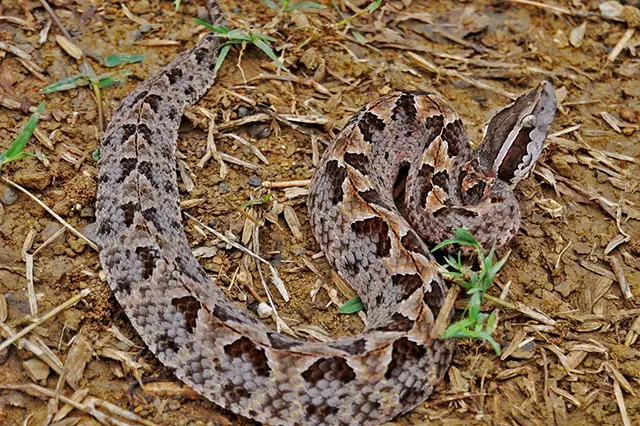Malayan Pit Viper in Bali
The Malayan Pit Viper, scientifically known as Calloselasma rhodostoma, is one of Bali’s most formidable serpents. Known locally as Ular Tanah, this snake is notorious for its potent hemotoxic venom, which causes severe pain, swelling, and tissue damage upon envenomation. Unlike many other snakes that tend to flee from humans, the Malayan Pit Viper is known for its aggressive nature and tendency to stand its ground. This behavior, combined with its excellent camouflage among leaf litter and forest floors, makes accidental encounters more common and potentially dangerous.
Typically nocturnal, these vipers are active at night, hunting small mammals, birds, and amphibians. During the day, they often remain hidden under leaves or debris, waiting for the cover of darkness. Their distinctive brown color with darker triangular patterns aids in their stealth, allowing them to blend seamlessly into their surroundings. The triangular head, a hallmark of many viper species, and the stout body are characteristic features that distinguish this snake.
Despite their fearsome reputation, Malayan Pit Vipers play a crucial role in the ecosystem by controlling the populations of their prey. They are found primarily in forests, plantations, and rural areas of central and western Bali. While bites from these snakes are serious and require immediate medical attention, understanding their behavior and habitat can help in avoiding unwanted encounters.




